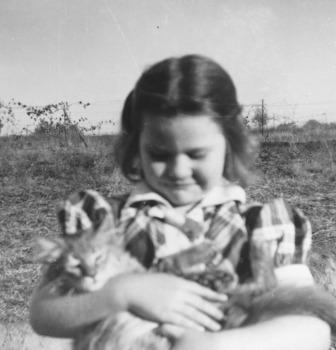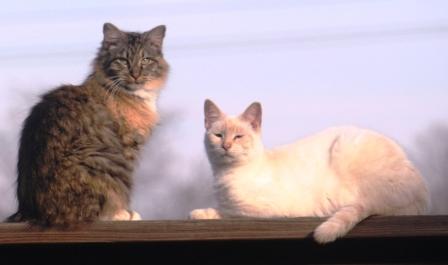
Why do we do it?
My boys’ mother died last night. You may recall that I mentioned in a previous column a road trip to pick up two kittens. Well, Oliver and Yoshi are now big strapping boys. And I am their mom now. But I have kept in contact with Tim and Tamy, who own their furry mother, Splotchy. And I also just learned that Willie, the cat-chasing rat I mentioned last issue, has passed on, and his mom is devastated. Animal rescuers and “moms and dads” alike often wonder, when we lose another of our babies, why do we do it?
The boys came from a cat community in Houston that existed when Tim and Tamy moved into their home over 20 years ago. What started as a band of neighbors feeding stray cats became an extended family for Tamy and Tim. They added ramps and nooks for hurricanes and floods. As more of the neighbors moved away, their yard became home for the cats. But their goal is zero population growth.
Cats are becoming the highest population of healthy animals euthanized at shelters across the country, and many rescuers are working with cities on a solution through TNR (trap-neuter-release) programs. Best Friends Animal Society in Utah has set up many such programs, including one in Albuquerque. For every cat brought into a city shelter, at least one cat dies. Bring in a litter of five kittens, and you do the math. That is a statistic my fellow cat-lovers and I would like to see changed.
It was natural for Tamy to accept the responsibility of the cats in her neighborhood. She grew up in Japan, where cats are looked at quite differently. Every village, town, and city has neighborhood cats that are welcomed and cared for. If you go to a park or temple and sit to meditate or rest, you might find a cat sitting next to you. Many shops have a cat or two to keep the mice away. And since many apartment-dwellers cannot have pets, they enjoy interacting with cats at places like Japan’s “cat cafes” and other opportunities to just sit and share some time with a furry creature. Purring has a known calming effect.
Japan’s cats are used to being treated kindly. There is even an island, Tashirojima, dedicated to them. Before the tsunami hit last year, all of the cats there began running to the top of the hills. And all of the human residents without question followed them. There were no human fatalities, but 11 cats perished. They were all mourned as friends. For Tamy, taking care of the neighborhood cats allowed her to bring some of her culture to Texas.

Last night, Splotchy came to the back door while Tim and Tamy were asleep. She died outside the door with her faithful niece, Friendly Girl, standing guard. She was buried under her favorite mandarin tree. Feral cats will hide when they are sick — instinct tells them to stay away. Cats that have a bond with humans come home for help. Splotchy was three times the average age of a feral cat. She had a family to come home to. And that is why we do it.
Over the years, many of us have tried to provide as much love and family as we can give the animals that come into our lives, whether by adoption or fostering or TNR programs or volunteering or supporting a community. We have cried in joy and sadness and anger. But we keep doing it, for the love of the animals and how they make our lives complete. Knowing that in their own way they appreciate what we do. We have domesticated these animals for our use and pleasure. We owe them a dignified and safe life in return.
Kat Brown of Albuquerque is a lifelong animal-lover, especially of cats. She wears many hats, but animal-lover is perhaps the one that has given her the most pleasure. Share your cat stories or comments at katskorner88@gmail.com.
